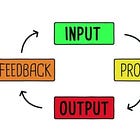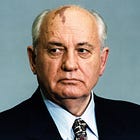In the spring of 1972, the United States and the Soviet Union signed a landmark agreement on environmental protection. On the surface, it appeared a diplomatic olive branch at the height of the Cold War. But that agreement, signed on May 23rd, stands not as a footnote of international goodwill, but as the quiet launch of a technocratic model of global governance.
And its roots lie a decade earlier, inside the internal restructuring of the CIA.
This is a summary of the recent Substack posts linked below.
To understand the significance of that signature, we need to go back to the early 1960s, when an intelligence failure set off a chain reaction that would permanently change the structure of American governance. The Bay of Pigs invasion in 1961 was more than a fiasco. It shattered the perceived omniscience of the CIA and triggered calls for reform from within the highest levels of the U.S. government.
In a 1961 memo to Kennedy, Arthur Schlesinger Jr — a close advisor to JFK — outlined the plan for a new architecture: the CIA would be broken into three distinct pillars — operational, administrative, and research. On the surface, this sounded like decentralisation, but in function it set the stage for the technocratic intelligence complex that would later shape everything from economic forecasting to climate policy. Under this new structure, covert operations would remain in-house, but would require administrative approval by the State Department; while a new, largely undefined research wing would set the long-term agenda. And this division mapped perfectly onto a systems theory model of governance.
Enter Robert Amory Jr.
Amory, then Deputy Director of Intelligence, was central to this restructuring. A Harvard law professor with a taste for long-range planning, Amory pushed for the CIA to adopt a more scientific posture. He wanted the Agency not just to analyse enemy capacity, but to predict future behaviours using econometric models and systems logic. Amory supported the formation of internal divisions modelled on Leontief's input-output economics, including the creation of a Military-Economic Research Division that blended national security with economic forecasting. Under Amory, the CIA began treating geopolitics as a simulation problem: one of inputs, outputs, and system constraints.
This push for predictive intelligence paralleled the broader intellectual trend in elite planning circles. RAND Corporation was applying similar logic in defence; McNamara was remaking the Pentagon with systems analysis; and cybernetics was quietly becoming the lingua franca of institutional management. Amory was doing for the CIA what Jantsch, Leontief, and Forrester were doing in their respective domains: reconfiguring institutions as predictive engines. But in Amory's case, his engine had global reach.
But an unplanned development came quickly. After the Bay of Pigs, JFK fired the top four officials at the CIA, including Amory. But Schlesinger worked behind the scenes to protect him — likely because Amory was in charge of implementing the long-term systems integration plan.
But it was under LBJ that the pieces fell into place.
Lyndon B Johnson dramatically escalated environmental and health-related governance. His administration issued a cascade of Executive Orders and Acts that mirrored the very logic Amory had embedded in CIA analysis: forecasting, control, and intervention, only in different spheres of activity. Johnson's NSAM 345 in 1966 openly called for US-Soviet cooperation in scientific and environmental domains, paving the way for the eventual creation of IIASA — a joint US-USSR systems modelling institute, where the overlap is impossible to ignore. IIASA would go on to model energy, population, climate, and resource systems — exactly the domains outlined by the Club of Rome's infamous 1972 report, Limits to Growth.
Meanwhile, domestic agencies like the EPA and the Council on Environmental Quality (CEQ) were stood up as regulatory arms of this new predictive order. Crucially, their data often fed into international bodies through UN-linked systems, bypassing national legislatures altogether. The IUCN, in tandem, worked to internationalise this strategy through soft law and global norms. The real-world application of systems theory was no longer hypothetical — it was slowly, but surely, implemented, bit by bit, into every sphere of government activity.
Then came the 1968 UNESCO Biosphere Conference.
This event — framed around the concept of Spaceship Earth — issued recommendations calling for a ‘balance between man and nature’ and warned of health risks stemming from environmental degradation — the earliest link between ecological modelling and zoonotic disease governance — but it was also the moment when ‘the precautionary principle’ was floated as an acceptable basis for global policy. With no hard data, and very little understanding of Spaceship Earth in general, the precautionary principle became a blank cheque for intervention.
This brings us full circle to May 23, 1972. When Nixon signed the bilateral environmental agreement with the USSR, the logic behind it had already been institutionalised. The USSR, despite its catastrophic environmental track record — vanishing lakes, radioactive disasters, and poisoned rivers — was not interested in ecology. It was interested in integration. And environmentalism was the politically neutral mask for fusion.
What followed were decades of global conferences, increasingly framed in moral language, leading up to the Earth Charter in 2000 — which codified a new ‘planetary ethic’. But that ethic, as we've seen, was not rooted in natural law or democratic mandate. It was rooted in simulations. Models the IIASA itself admitted, by 1978, could not accurately forecast the systems they claimed to master. Oceans, by far the largest carbon sink, were barely understood, and the data was by and large completely missing. The science was patchwork, but the policies rolled on.
What emerged was not just global governance, but a system of governance justified by its own models — models which, when interrogated, admit they cannot explain the very phenomena they're used to regulate. This is the structure Robert Amory Jr. helped set in motion. And when we examine the extraordinary alignment of U.S. internal policy changes, international treaties, and predictive planning frameworks from the early '60s onward, one conclusion appears inescapable:
It is statistically implausible for this to have happened by accident.
The CIA was not just restructured — it was reoriented. Environmental policy was not just passed — it was prepared. And the May 23rd agreement was not just diplomacy. It was delivery — the fulfilment of a vision launched more than a decade earlier, when a senior intelligence analyst and his defenders quietly rewired America for the technocratic age through the fusion of forward prediction through systems theory.
No one voted for this. No one explained it. But you live inside its logic today. That is the price of not asking questions when systems are designed in silence. After all — the price of freedom is eternal vigilance.
But Amory’s career with the CIA came to an early end. Appeals were ignored, and the Schlesinger- and Amory-backed concept — the ‘World Congress for Freedom and Democracy’, a clearly subversive attempt to overturn democracy from within — never came to pass, as JFK opted for an unscheduled housecleaning.
And within months, Zapruder captured that film in Dallas, Texas — with the whole world watching.












